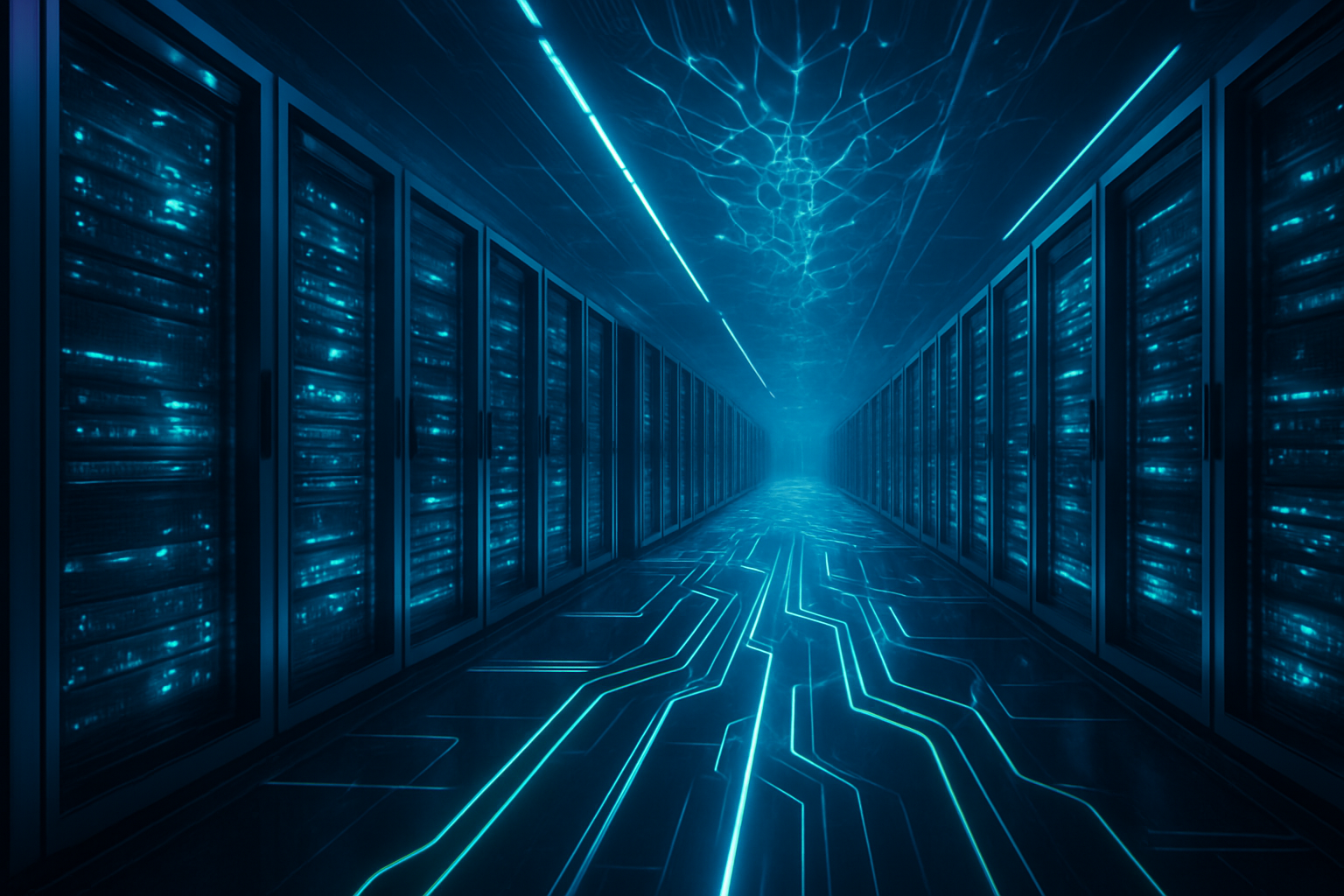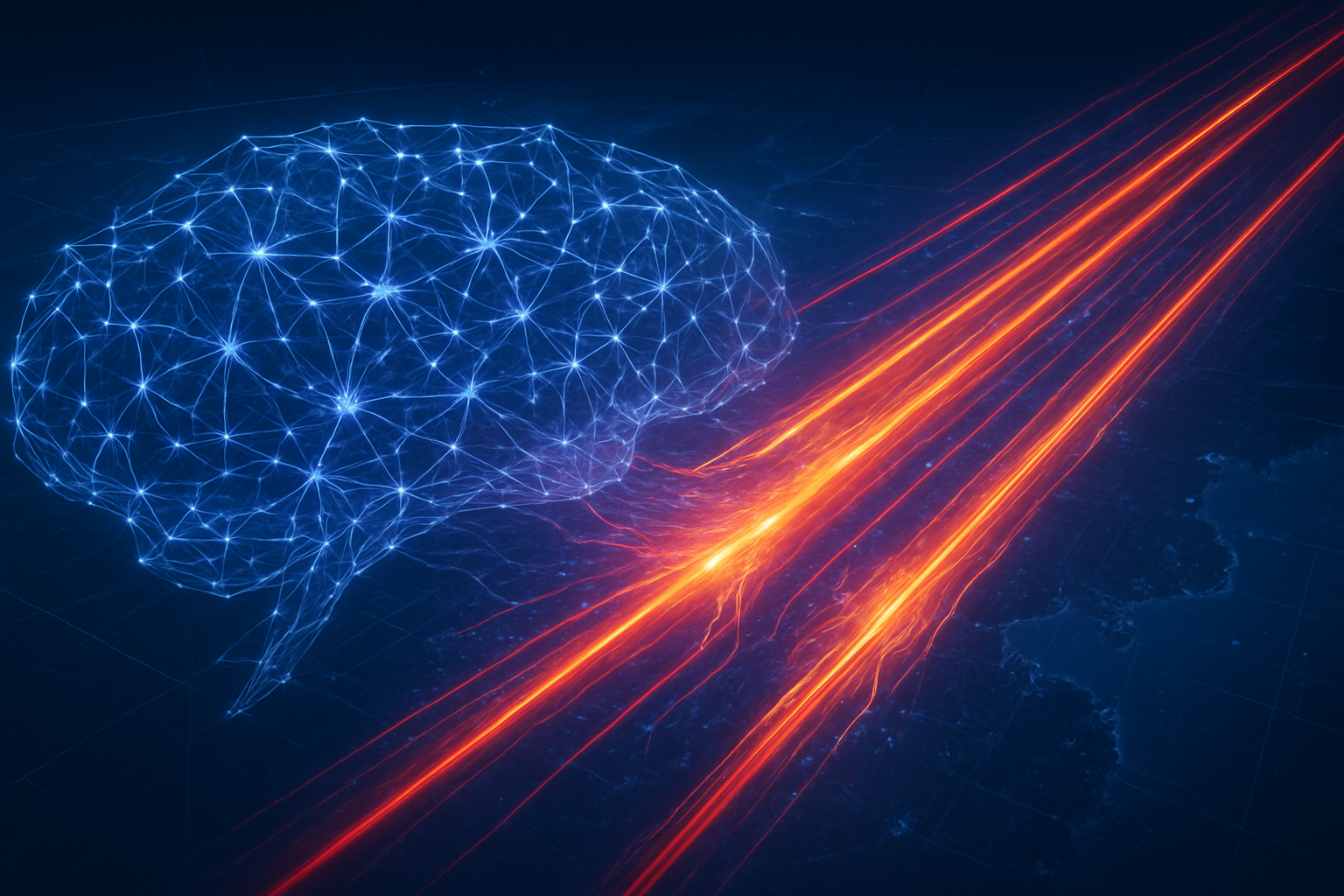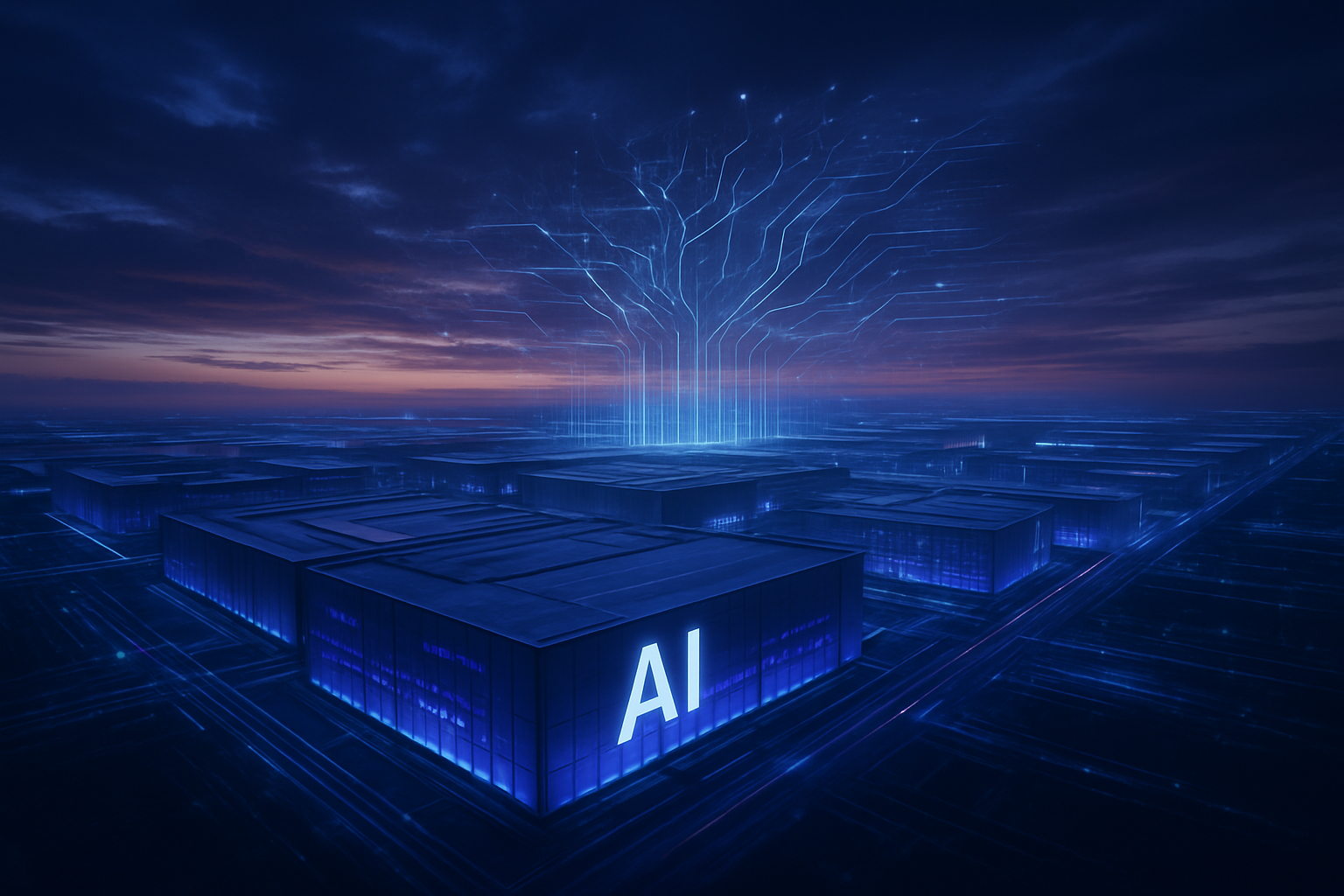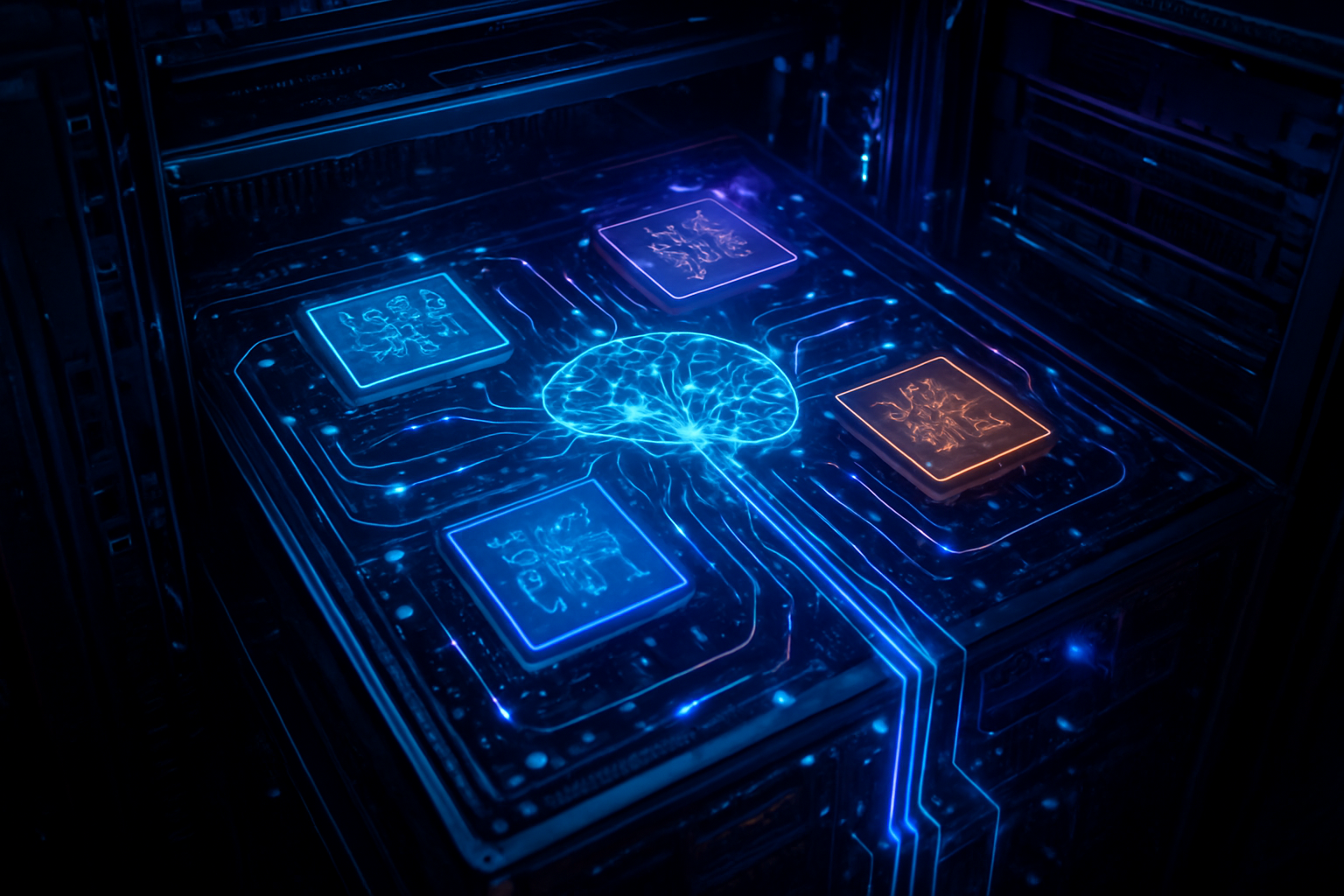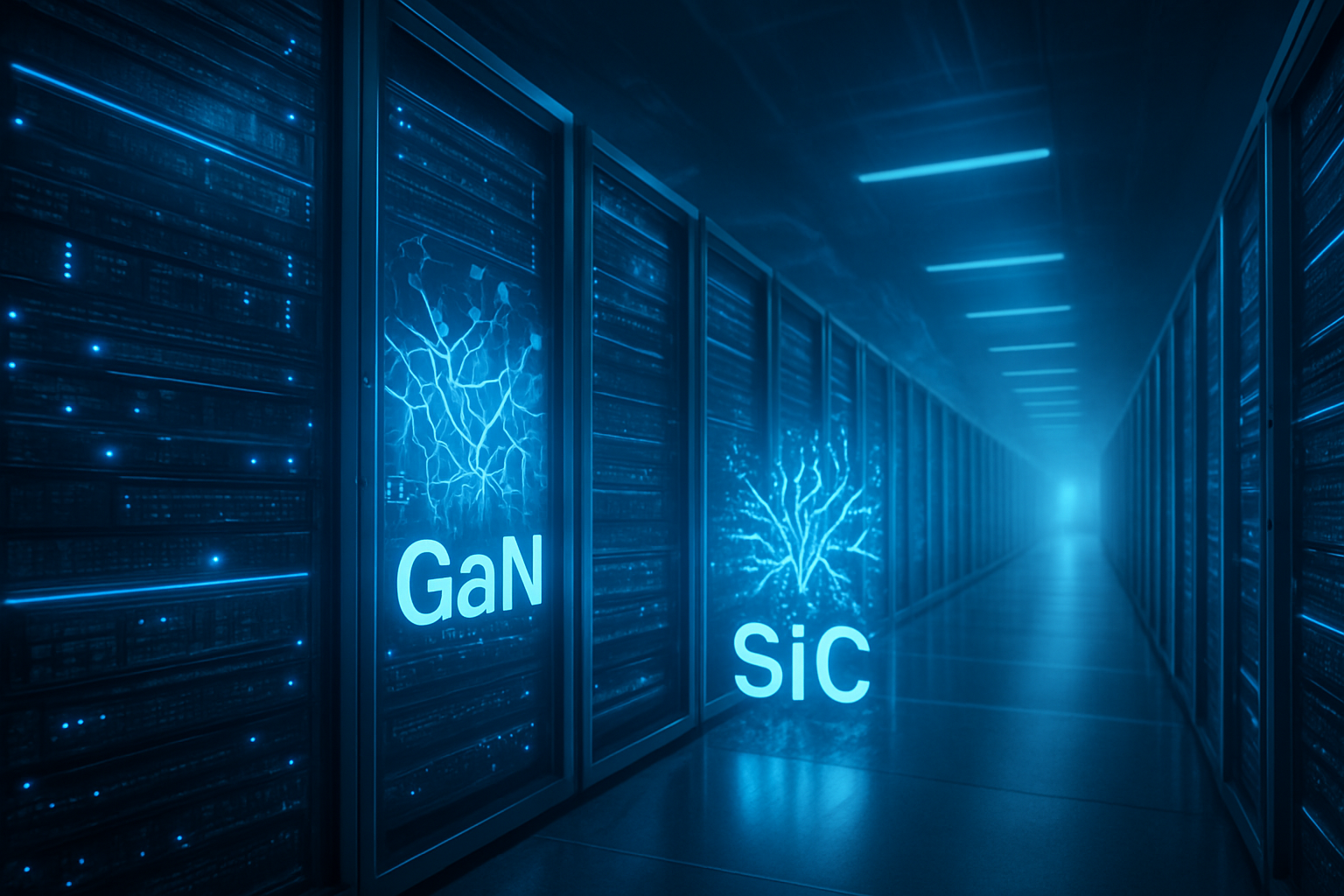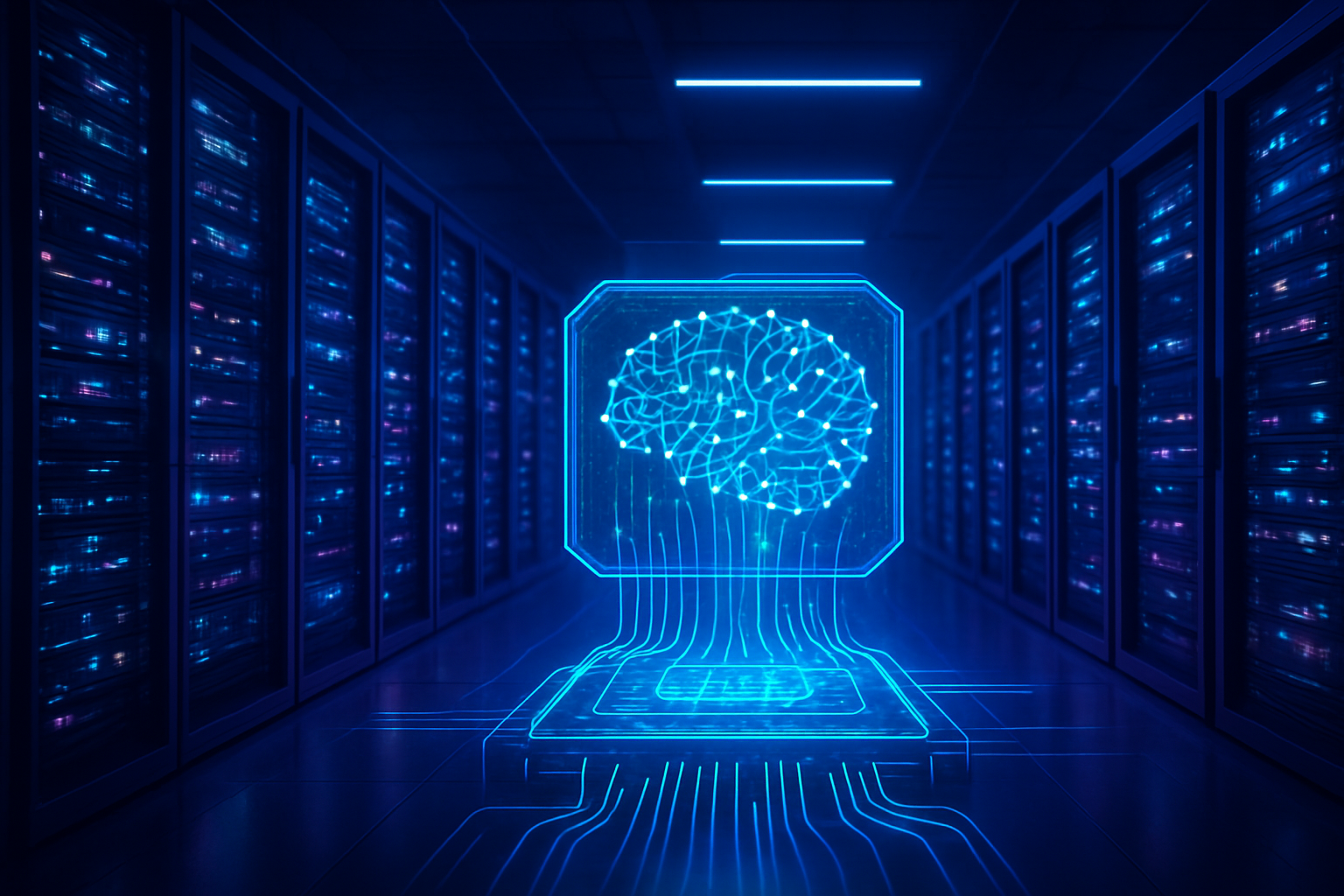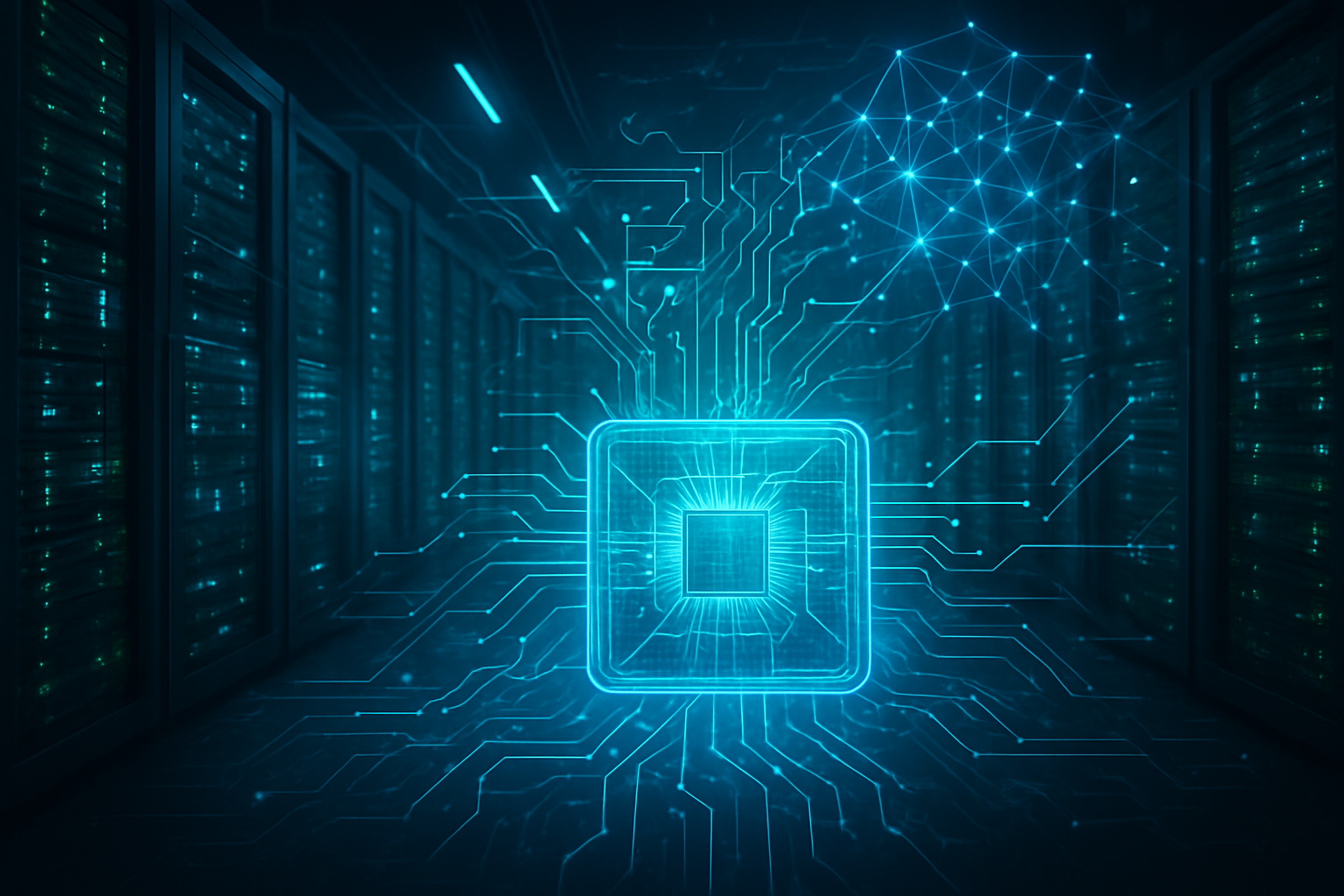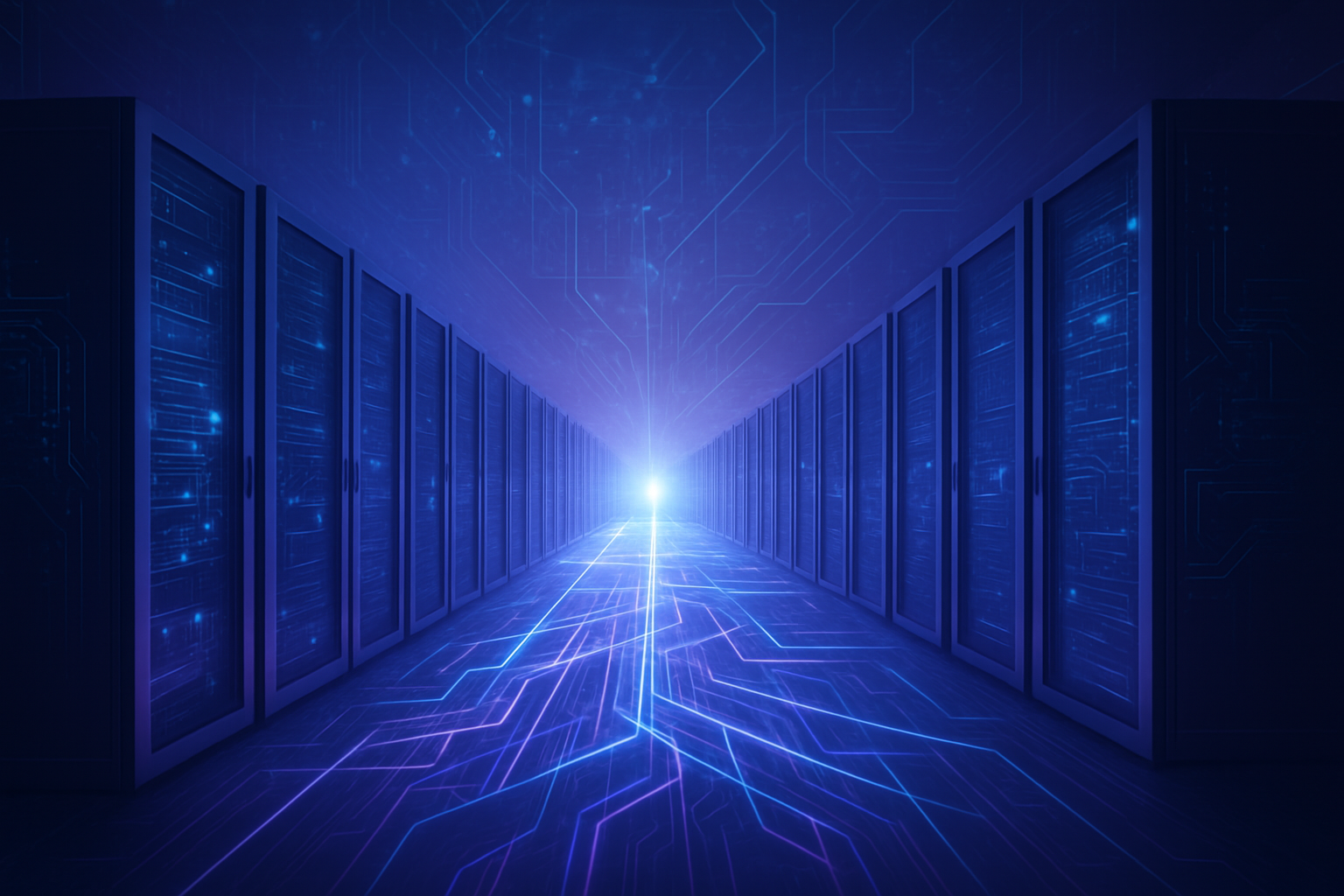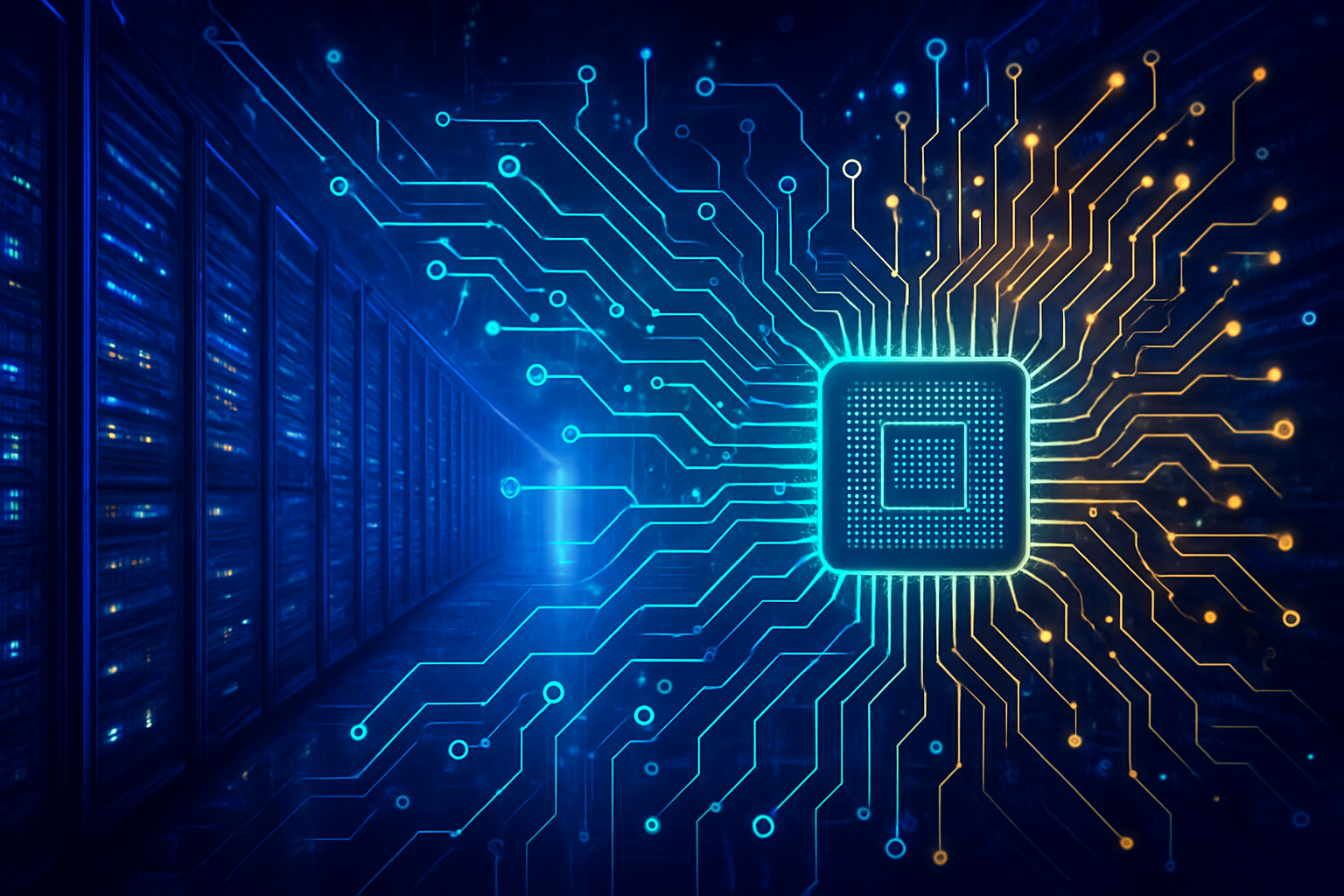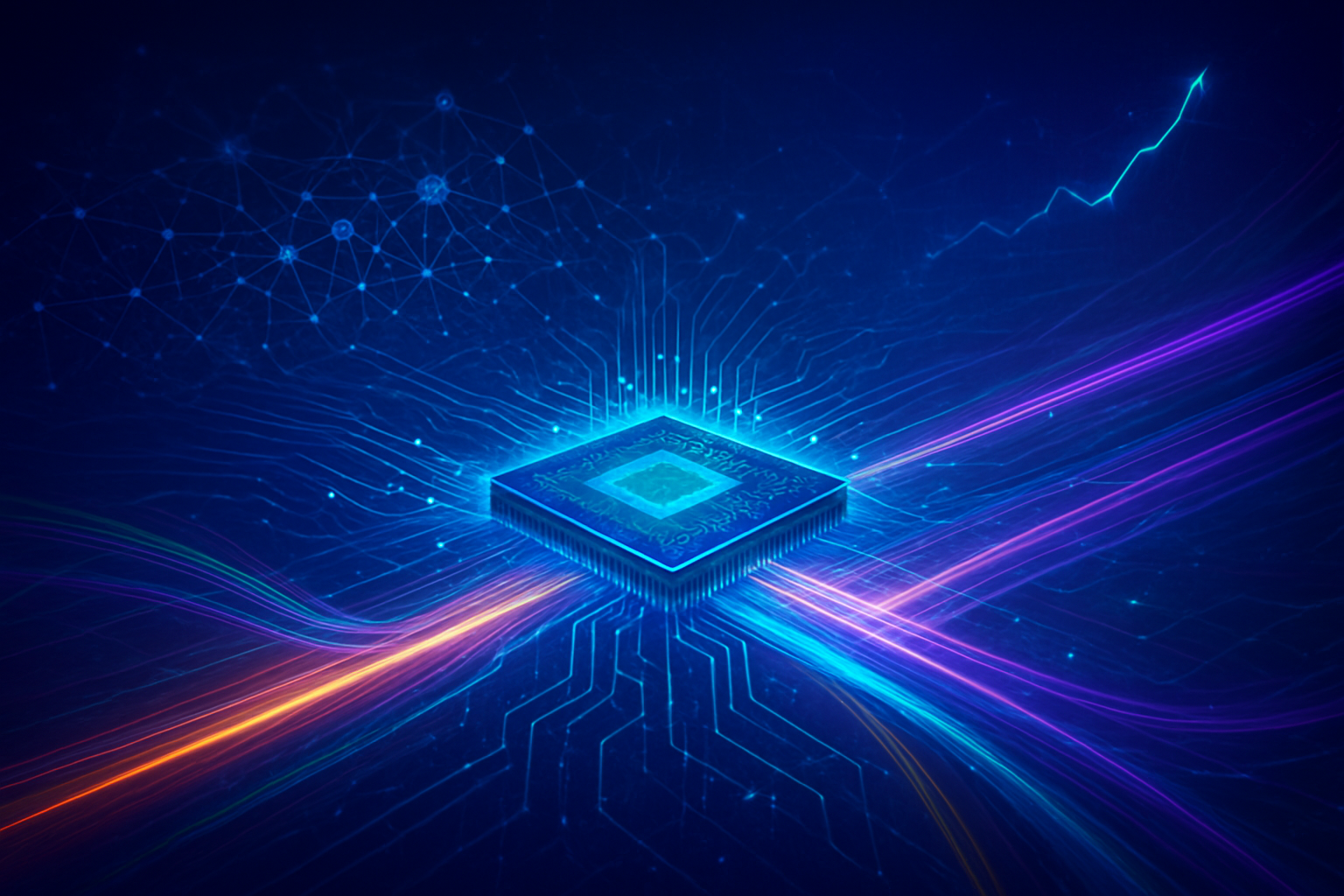Neubiberg, Germany – November 13, 2025 – Infineon Technologies AG (ETR: IFX), a global leader in semiconductor solutions, is strategically positioning itself at the heart of the artificial intelligence revolution. The company recently unveiled its full fiscal year 2025 earnings, reporting a resilient performance amidst a mixed market, while simultaneously announcing pivotal partnerships designed to supercharge the efficiency and scalability of AI data centers. These developments underscore Infineon’s commitment to "powering AI" by providing the foundational energy management and power delivery solutions essential for the next generation of AI infrastructure.
Despite a slight dip in overall annual revenue for fiscal year 2025, Infineon's latest financial report, released on November 12, 2025, highlights a robust outlook driven by the insatiable demand for chips in AI data centers. The company’s proactive investments and strategic collaborations with industry giants like SolarEdge Technologies (NASDAQ: SEDG) and Delta Electronics (TPE: 2308) are set to solidify its indispensable role in enabling the high-density, energy-efficient computing environments critical for advanced AI.
Technical Prowess: Powering the AI Gigafactories of Compute
Infineon's fiscal year 2025, which concluded on September 30, 2025, saw annual revenue of €14.662 billion, a 2% decrease year-over-year, with net income at €1.015 billion. However, the fourth quarter showed sequential growth, with revenue rising 6% to €3.943 billion. While the Automotive (ATV) and Green Industrial Power (GIP) segments experienced some year-over-year declines, the Power & Sensor Systems (PSS) segment demonstrated a significant 14% revenue increase, surpassing estimates, driven by demand for power management solutions.
The company's guidance for fiscal year 2026 anticipates moderate revenue growth, with particular emphasis on the booming demand for chips powering AI data centers. Infineon's CEO, Jochen Hanebeck, highlighted that the company has significantly increased its AI power revenue target and plans investments of approximately €2.2 billion, largely dedicated to expanding manufacturing capabilities to meet this demand. This strategic pivot is a testament to Infineon's "grid to core" approach, optimizing power delivery from the electrical grid to the AI processor itself, a crucial differentiator in an energy-intensive AI landscape.
In a significant move to enhance its AI data center offerings, Infineon has forged two key partnerships. The collaboration with SolarEdge Technologies (NASDAQ: SEDG) focuses on advancing SolarEdge’s Solid-State Transformer (SST) platform for next-generation AI and hyperscale data centers. This involves the joint design and validation of modular 2-5 megawatt (MW) SST building blocks, leveraging Infineon's advanced Silicon Carbide (SiC) switching technology with SolarEdge's DC architecture. This SST technology aims for over 99% efficiency in converting medium-voltage AC to high-voltage DC, significantly reducing conversion losses, size, and weight compared to traditional systems, directly addressing the soaring energy consumption of AI.
Simultaneously, Infineon has reinforced its alliance with Delta Electronics (TPE: 2308) to pioneer innovations in Vertical Power Delivery (VPD) for AI processors. This partnership combines Infineon's silicon MOSFET chip technology and embedded packaging expertise with Delta's power module design to create compact, highly efficient VPD modules. These modules are designed to provide unparalleled power efficiency, reliability, and scalability by enabling a direct and streamlined power path, boosting power density, and reducing heat generation. The goal is to support next-generation power delivery systems capable of supporting 1 megawatt per rack, with projections of up to 150 tons of CO2 savings over a typical rack’s three-year lifespan, showcasing a commitment to greener data center operations.
Competitive Implications: A Foundational Enabler in the AI Race
These developments position Infineon (ETR: IFX) as a critical enabler rather than a direct competitor to AI chipmakers like NVIDIA (NASDAQ: NVDA), Advanced Micro Devices (NASDAQ: AMD), or Intel (NASDAQ: INTC). By focusing on power management, microcontrollers, and sensor solutions, Infineon addresses a fundamental need in the AI ecosystem: efficient and reliable power delivery. The company's leadership in power semiconductors, particularly with advanced SiC and Gallium Nitride (GaN) technologies, provides a significant competitive edge, as these materials offer superior power efficiency and density crucial for the demanding AI workloads.
Companies like NVIDIA, which are developing increasingly powerful AI accelerators, stand to benefit immensely from Infineon's advancements. As AI processors consume more power, the efficiency of the underlying power infrastructure becomes paramount. Infineon's partnerships and product roadmap directly support the ability of tech giants to deploy higher compute densities within their data centers without prohibitive energy costs or cooling challenges. The collaboration with NVIDIA on an 800V High-Voltage Direct Current (HVDC) power delivery architecture further solidifies this symbiotic relationship.
The competitive landscape for power solutions in AI data centers includes rivals such as STMicroelectronics (EPA: STM), Texas Instruments (NASDAQ: TXN), Analog Devices (NASDAQ: ADI), and ON Semiconductor (NASDAQ: ON). However, Infineon's comprehensive "grid to core" strategy, coupled with its pioneering work in new power architectures like the SST and VPD modules, differentiates its offerings. These innovations promise to disrupt existing power delivery approaches by offering more compact, efficient, and scalable solutions, potentially setting new industry standards and securing Infineon a foundational role in future AI infrastructure builds. This strategic advantage helps Infineon maintain its market positioning as a leader in power semiconductors for high-growth applications.
Wider Significance: Decarbonizing and Scaling the AI Revolution
Infineon's latest moves fit squarely into the broader AI landscape and address two critical trends: the escalating energy demands of AI and the urgent need for sustainable computing. As AI models grow in complexity and data centers expand to become "AI gigafactories of compute," their energy footprint becomes a significant concern. Infineon's focus on high-efficiency power conversion, exemplified by its SiC technology and new SST and VPD partnerships, directly tackles this challenge. By enabling more efficient power delivery, Infineon helps reduce operational costs for hyperscalers and significantly lowers the carbon footprint of AI infrastructure.
The impact of these developments extends beyond mere efficiency gains. They facilitate the scaling of AI, allowing for the deployment of more powerful AI systems in denser configurations. This is crucial for advancements in areas like large language models, autonomous systems, and scientific simulations, which require unprecedented computational resources. Potential concerns, however, revolve around the speed of adoption of these new power architectures and the capital expenditure required for data centers to transition from traditional systems.
Compared to previous AI milestones, where the focus was primarily on algorithmic breakthroughs or chip performance, Infineon's contribution highlights the often-overlooked but equally critical role of infrastructure. Just as advanced process nodes enable faster chips, advanced power management enables the efficient operation of those chips at scale. These developments underscore a maturation of the AI industry, where the focus is shifting not just to what AI can do, but how it can be deployed sustainably and efficiently at a global scale.
Future Developments: Towards a Sustainable and Pervasive AI
Looking ahead, the near-term will likely see the accelerated deployment of Infineon's (ETR: IFX) SiC-based power solutions and the initial integration of the SST and VPD technologies in pilot AI data center projects. Experts predict a rapid adoption curve for these high-efficiency solutions as AI workloads continue to intensify, making power efficiency a non-negotiable requirement for data center operators. The collaboration with NVIDIA on 800V HVDC power architectures suggests a future where higher voltage direct current distribution becomes standard, further enhancing efficiency and reducing infrastructure complexity.
Potential applications and use cases on the horizon include not only hyperscale AI training and inference data centers but also sophisticated edge AI deployments. Infineon's expertise in microcontrollers and sensors, combined with efficient power solutions, will be crucial for enabling AI at the edge in autonomous vehicles, smart factories, and IoT devices, where low power consumption and real-time processing are paramount.
Challenges that need to be addressed include the continued optimization of manufacturing processes for SiC and GaN to meet surging demand, the standardization of new power delivery architectures across the industry, and the ongoing need for skilled engineers to design and implement these complex systems. Experts predict a continued arms race in power efficiency, with materials science, packaging innovations, and advanced control algorithms driving the next wave of breakthroughs. The emphasis will remain on maximizing computational output per watt, pushing the boundaries of what's possible in sustainable AI.
Comprehensive Wrap-up: Infineon's Indispensable Role in the AI Era
In summary, Infineon Technologies' (ETR: IFX) latest earnings report, coupled with its strategic partnerships and significant investments in AI data center solutions, firmly establishes its indispensable role in the artificial intelligence era. The company's resilient financial performance and optimistic guidance for fiscal year 2026, driven by AI demand, underscore its successful pivot towards high-growth segments. Key takeaways include Infineon's leadership in power semiconductors, its innovative "grid to core" strategy, and the groundbreaking collaborations with SolarEdge Technologies (NASDAQ: SEDG) on Solid-State Transformers and Delta Electronics (TPE: 2308) on Vertical Power Delivery.
These developments represent a significant milestone in AI history, highlighting that the future of artificial intelligence is not solely dependent on processing power but equally on the efficiency and sustainability of its underlying infrastructure. Infineon's solutions are critical for scaling AI while mitigating its environmental impact, positioning the company as a foundational pillar for the burgeoning "AI gigafactories of compute."
The long-term impact of Infineon's strategy is likely to be profound, setting new benchmarks for energy efficiency and power density in data centers and accelerating the global adoption of AI across various sectors. What to watch for in the coming weeks and months includes further details on the implementation of these new power architectures, the expansion of Infineon's manufacturing capabilities, and the broader industry's response to these advanced power delivery solutions as the race to build more powerful and sustainable AI continues.
This content is intended for informational purposes only and represents analysis of current AI developments.
TokenRing AI delivers enterprise-grade solutions for multi-agent AI workflow orchestration, AI-powered development tools, and seamless remote collaboration platforms.
For more information, visit https://www.tokenring.ai/.
